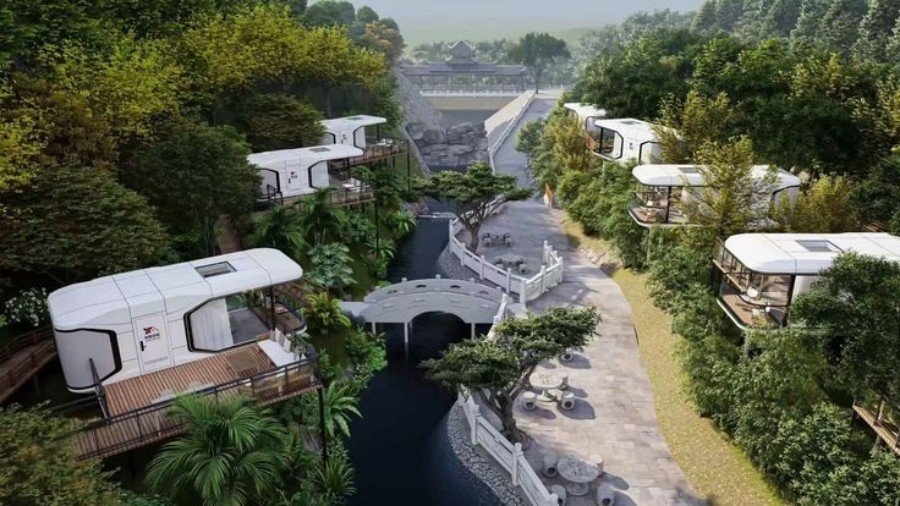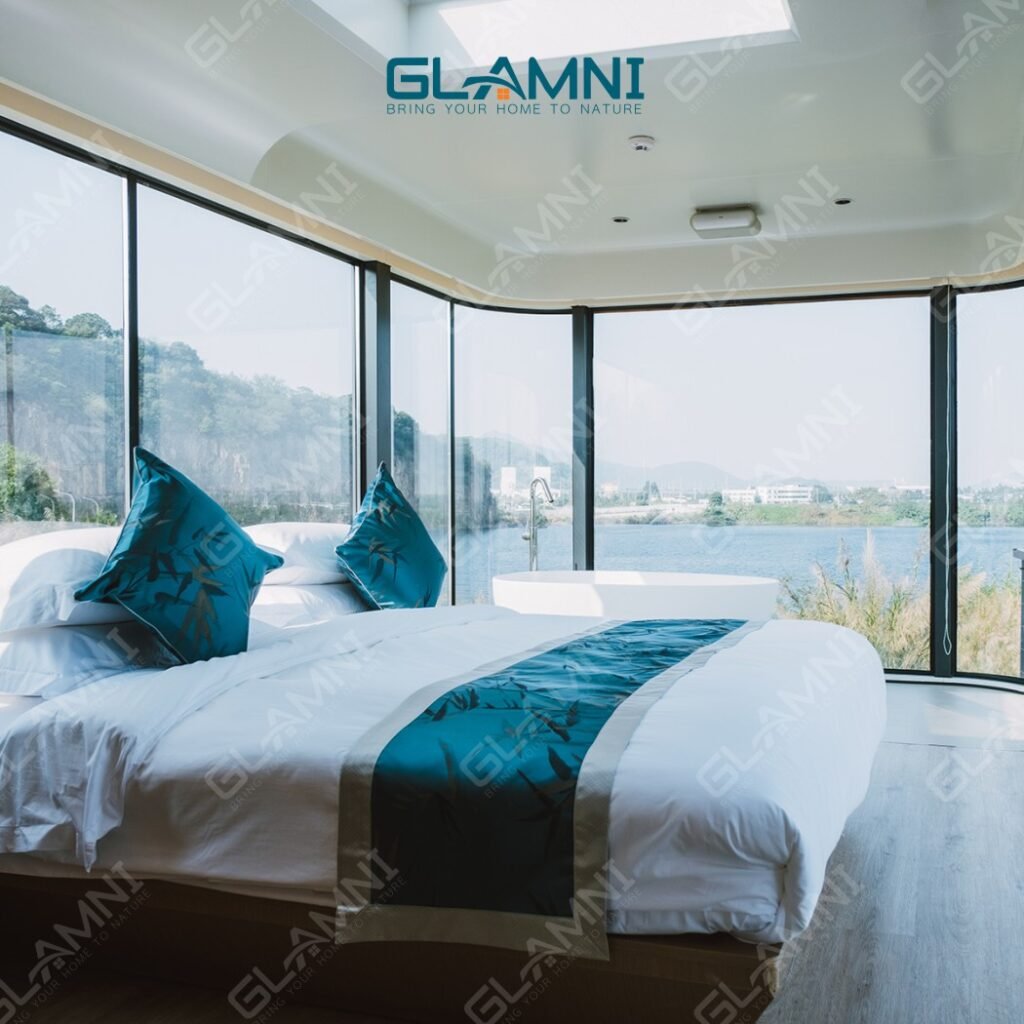Safety is surely one of your top concerns when choosing a new home. And the first question that comes up is, “Are prefabricated homes safe?” Modern prefab builds rely on factory precision, strict codes, and robust materials—yet many buyers still want reassurance before taking the plunge.
Modern prefabricated homes are considered safe because they meet the same building, fire and structural codes as site-built houses, incorporate fire-rated walls and factory-tested wiring, feature reinforced frames tested to 120 mph winds, and include shear-wall bracing for earthquakes.
In this article, we will discuss prefab homes and how they protect you from fires, storms, earthquakes, and other disasters so you can have peace of mind with your decision.

1) What Makes a Prefab Home Safe?
While prefab homes are growing in popularity, people still ask, Are they safe to live in? The good news is that, like traditional houses, safety is taken into account during the construction of prefab houses. Here, we will discuss the Safety features of a prefab home:
i) Built to the Same Codes
Like conventional homes, prefab houses follow safety regulations. Building codes such as the International Residential Code (IRC) or laws specific to your state defines these rules. Therefore, as with any house, prefab homes must be capable of enduring severe weather like heavy rainfall, strong winds, or snow.
ii) Factory Precision
Moreover, prefab homes are constructed indoors, away from the elements. Because the factory is clean and dry, the wood and other materials remain straight and strong. Thus, everything is built square and level, which greatly assists in the home’s assembly when it arrives at your land.

iii) Extra Strength for Shipping
The reason why prefab homes are secure during shipping is because they are built to be extra strong for traveling. Before they get delivered, the parts journey on large trucks and traverse bumpy roads. The construction crew takes protection by using extra framing for the walls and roof which makes the entire house stronger when assembled.
iv) Multiple Inspections
Finally, prefab homes undergo two inspections. The first inspection takes place when the house is in the factory. The second inspection happens after the pieces are assembled on your land. This way you can be sure that the house is safe and functional.
2) Are Prefab Homes Fire-Resistant?
Yes, safety measures are in place for a fire emergency in prefab houses. Now we will examine the fire safety features of prefab homes:
Fire-resistant construction materials: As an example, Type-X drywall fire-resist materials used in construction slow down fires. Furthermore, construction workers use fire blocking and wiring rated under UL to add on. This means prefab houses meet the same fire safety measures as traditional houses.

- Built-in safety features: In addition, prefab houses come with smoke detectors and carbon monoxide (CO) detectors that are hardwired into the system. Where warranted, fire sprinklers are already fitted. Such factory-built features ensure nothing relevant is overlooked.
- Factory-installed wiring: At last, most of the wiring is done by skilled workers at the factory. This reduces some of the errors that are made on-site. Since wiring issues cause a high percentage of home fires, factory wiring enhances the home’s safety.
3) Can Prefab Homes Withstand High Winds and Tornadoes?
Everyone knows that strong winds and tornadoes are a serious threat to life, home, and property. So, can prefabricated homes withstand such powerful storms? Let us examine how they keep safe during challenging climatic conditions.
a) Strong Steel Tie-Downs and Anchor Bolts
Steel tie downs and bolts are used in prefab homes to keep the house safely fastened to the foundation. With such a home, the house can endure winds ranging from 120 to 160 miles per hour. This is beneficial in many places that experience heavy storms.
b) Impact-Resistant Windows for Safety
Moreover, impact-rated windows can be added for homes in areas prone to tornadoes. These windows help safeguard the house from storm-borne debris, thus keeping you and your family sheltered and secure.

c) Securely Anchored Foundations
Finally, prefab homes have anchored foundations which are properly fastened to the structure and prevents the whole building from becoming unstable. This means the house remains safe even during the strongest winds and severe weather.
4) Are Prefab Homes Earthquake-Safe?
Just like any home, it’s essential to ensure that prefab houses can withstand the shaking from earthquakes. In this section, we will discuss the process they use:
- Flexible Shear Walls and Connectors: The use of shear walls and flexible connectors in prefab homes allows some movement during an earthquake, preventing the structure from breaking apart.
- Built to High Seismic Standards: In fact, numerous prefab home constructors design their houses to comply with Seismic Zone 4 regulations. This designation represents the strongest met criteria for earthquakes within the U.S. mainland, meaning these homes are equipped to withstand intense tremors.
- Third-Party Engineering Reviews: In addition, external reviewers analyze the architecture documents beforehand to confirm that the design is within the bounds of the local seismic hazards. This precaution makes sure the home can remain safe regardless of location.

5) Which Materials and Systems Keep Prefab Homes Healthy and Efficient?
Pre-fab houses save energy and keep the air clean by using special materials and systems. Let’s examine how they perform this:
→ Low-VOC Finishes Improve Air Quality
To start with, prefab homes use finishes like cabinets and water-based paints, which do not discharge VOC (volatile organic compounds). Because of this, the indoor air is cleaner and healthier to breathe for everyone. For instance, consider a couple from California who relocated to a prefab home.
They noticed their child’s allergy symptoms improving. This was because their old home had strong chemical odors from furniture and paint, while the new prefab house had clean air without any chemical smells and low-VOC finishes.
This supports the results of a study published in the Journal of Allergy and Clinical Immunology that reported improving sensitive individuals’ indoor VOC levels significantly reduced respiratory symptoms.
→ Tight Building Envelope and Fresh-Air Units
Also, prefab homes have controlled building envelopes that help prevent moisture and dust from entering the home. At the same time, fresh-air devices like HRV or ERV units also provide fresh ,clean air to the home to maintain comfort levels.

→ High-Density Insulation Saves Energy
Finally, high-density insulation like spray foam or rigid panels is used in walls and roofs. As a result, heating and cooling bills can drop by 20 to 30 percent, making the home more energy-efficient and saving money.
6) Safety FAQ—Quick Answers for Buyers
Are you still questioning the safety of prefab homes? Here we will discuss some quick replies to frequently asked queries. We arranged them according to what first-time buyers, like you, usually ask:
i) Will a Prefab Blow Away in a Storm?
Not at all. Site-built homes and prefab houses that have been properly anchored to the building codes can withstand strong winds. Some are even rated for winds up to 160 mph.
ii) Is a Prefab the Same as a Mobile Home?
Not quite. A modular prefab is constructed to the local building codes, which are the same as regular houses. Mobile homes are built under HUD regulations about trailers.
iii) Can I Insure a Prefab Like a Regular House?
Yes, you can. Provided your prefab is set on a permanent foundation, nearly all insurers will grant you a standard homeowners policy, similar to any other dwelling.
iv) How Long Will a Prefab Last?
Just like a traditional house, a prefab home can undergo basic maintenance that allows it to last up to 60 years or even longer, equally alongside stick-built homes.
7) Safety Checklist Before You Buy
Checking a few important factors is important before purchasing a prefab home to guarantee that the structure is safe and healthy to live in. Here we will discuss a simple safety checklist to assist you:
Choose a Certified Builder: For a start, request the contractor to present their factory quality control (QC) reports together with the state modular certification. This confirms that their work complies with important safety and quality benchmarks.

Confirm Foundation and Tie-Down Plans: Then, assess the foundation and anchoring plans made by the builder. Check that they comply with the local wind or earthquake building codes for extra safety.
Ask for Fire Safety Details: Also, make sure to get the fire safety specifications in writing. Confirm the type of fire-rated drywall that was installed, the location of any smoke and carbon monoxide detectors, and if fire sprinklers are included.
Pick Healthy Finishes and a Fresh-Air System: Additionally, select low-VOC finishes for trim and moldings to prevent toxic VOCs. Request to have an HRV or ERV installed to filter stale air and maintain a breathable indoor environment.
Plan for Yearly Inspections: Last but not least, schedule an annual reminder to check the roof and foundation anchors. This minor step can allow you to solve woes before they worsen.
Conclusion
All in all, modular houses are safe, smart, strong, and built to last. They offer safety in terms of fire and storm resistance and exceed modern safety building codes. They also use energy-efficient systems, which boost comfort indoors.
With the right builder and required maintenance, a prefab home can last for many years while offering durability and safety. Thus, safety is yet another reason to go for prefab. At Glamni, we manufacture Prefab houses while keeping the listed safety features in mind.


